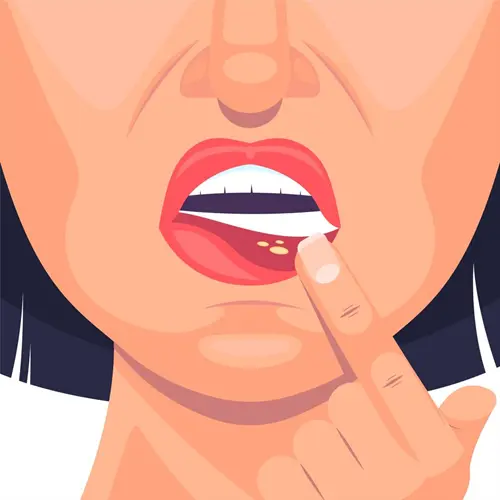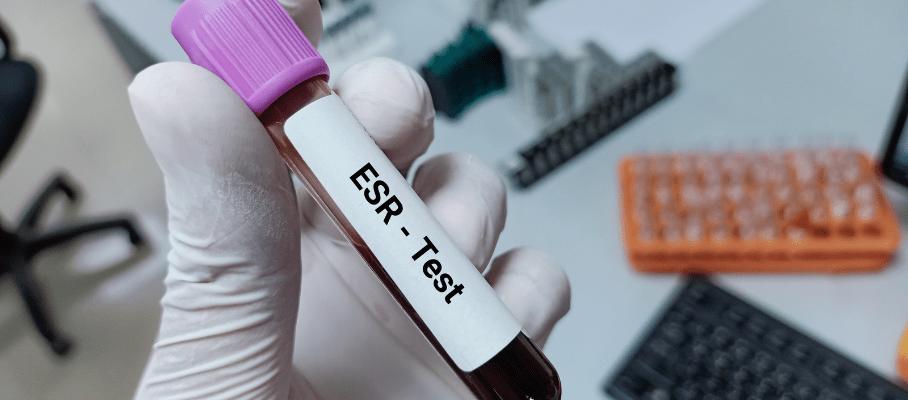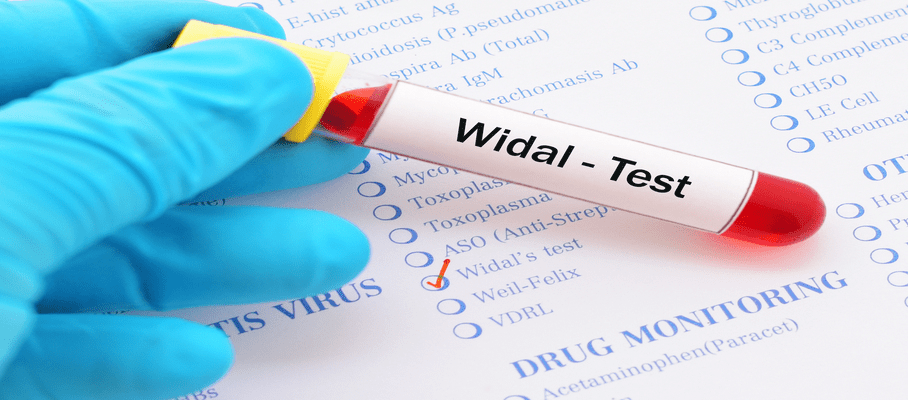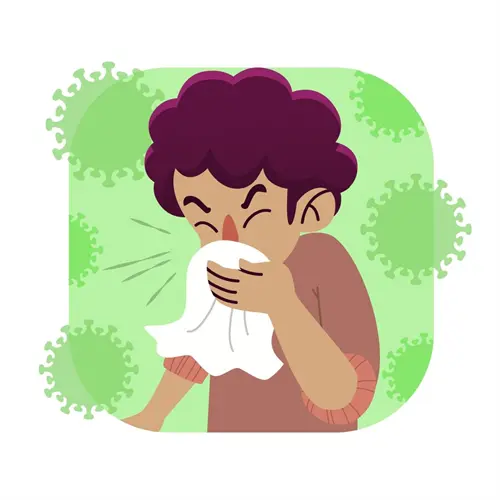Preventive Healthcare
White Spots on Lips: Causes, Symptoms, and Treatment
269 Views
0

Noticing white spots on lips can be worrying, leaving you wondering about the underlying cause and whether treatment is needed. While some causes, like Fordyce spots, are harmless, others, like oral thrush, require medical attention. This guide will help you understand the various reasons white bumps on lips may appear, the associated symptoms, and white spots on lips treatment options. Armed with this knowledge, you can take proactive steps to care for your lip health.
What are white spots on lips?
White spots on lips refer to small, pale bumps or patches that appear on the lips or surrounding skin. They can occur due to several reasons, ranging from benign conditions like Fordyce spots and milia to more serious issues like oral thrush or even oral cancer. The appearance of these white spots on lips can vary, with some being more raised or textured than others. Depending on the underlying cause, they may be accompanied by other symptoms like itching, pain, or dryness. Regularly inspecting your lips and noting any changes is important for early detection and appropriate management.
5 Common Causes of White Spots on Lips
Fordyce Spots
Main cause of Fordyce spots
Fordyce spots are one of the most common white spots on lips causes. These tiny, painless bumps are actually enlarged oil glands called sebaceous glands. They are considered a normal anatomical variation and are not contagious or harmful. Fordyce spots tend to be more noticeable in people with oily skin and typically appear during puberty or adulthood.
While the exact cause is unknown, factors like hormonal changes, genetics, and sun damage may play a role. These white bumps on lips are often confused with other conditions like milia or herpes, but a dermatologist can provide an accurate diagnosis.
Medical Treatment
Since Fordyce spots are benign, medical treatment is generally not necessary unless they cause significant cosmetic concern. In such cases, options like laser therapy, electrodessication, or surgical excision may be considered to reduce the appearance of these white spots on lips. However, it's crucial to weigh the potential risks and costs against the aesthetic benefits. Consulting a dermatologist can help determine if treatment is appropriate for your situation.
Home Remedies
As Fordyce spots are a natural occurrence and not a sign of poor health, specific home remedies are not required. Maintaining good oral hygiene practices like brushing twice daily, flossing, and using an antiseptic mouthwash can help prevent other lip concerns and keep your smile healthy. If the appearance of these white spots on lips causes distress, using a lip balm or moisturiser can help minimise their prominence. Remember, Fordyce spots are extremely common and are not a cause for embarrassment or alarm.
Milia
Main cause of Milia
Milia are tiny, keratin-filled cysts that appear as white bumps on lips or surrounding skin. They form when dead skin cells become trapped beneath the surface, rather than shedding normally. Milia are common in newborns but can occur in people of all ages. Risk factors include sun damage, skin resurfacing procedures, use of heavy skincare products, and certain medical conditions like rosacea or dermatitis. These pearly white spots on lips are often confused with whiteheads, but milia lack an opening and cannot be effectively extracted at home.
Medical Treatment
In most cases, milia clear up on their own within a few weeks or months without treatment. However, if these white spots on lips casues cosmetic concern or persist, a dermatologist may recommend extraction, cryotherapy, or laser treatment. Professional removal techniques are more effective and safer than attempting to extract milia at home, which can lead to scarring or infection. If you suspect your lip bumps are milia, consult a skincare professional for personalised guidance and white spots on lips treatment options.
Home Remedies
While medical extraction is the most effective way to clear milia, some white spots on lips remedy at home may help prevent their formation or encourage natural healing. Gentle exfoliation with a lip scrub or soft toothbrush can help remove dead skin cells and unclog pores. Applying a retinoid cream or face peel containing alpha-hydroxy acids may also promote cell turnover.
Canker Sores (Aphthous Ulcers)
Main cause of Canker Sores
Canker sores, medically known as aphthous ulcers, are small, shallow lesions that develop on the soft tissues of the mouth or lips. Unlike cold sores, canker sores are not contagious and are not caused by the herpes simplex virus. The exact cause is unknown, but triggers may include:
- Minor injury to the mouth from dental work, hard brushing, or biting
- Toothpastes and mouthwashes containing sodium lauryl sulfate
- Food sensitivities, particularly to acidic or spicy foods
- Vitamin deficiencies, especially B-12, zinc, folic acid, or iron
- Hormonal shifts during menstrual cycles
- Emotional stress or lack of sleep
- Bacterial infections like H. pylori
- Autoimmune disorders or gastrointestinal diseases
While not a direct cause of white spots on lips, canker sores can be mistaken for them in the early stages when they appear as small, round, white or yellowish lesions before developing into painful ulcers.
Medical Treatment
Most canker sores heal within one to two weeks. Over-the-counter pain relievers, gels, or pastes can ease discomfort and promote healing. For severe or persistent sores, a doctor may recommend corticosteroids, antibacterial mouthwash, or oral medication. Frequent or slow-healing sores may require medical evaluation for underlying issues.
Home Remedies
To soothe canker sores and promote healing, try home remedies like warm saltwater rinses, baking soda paste, or dabbing milk of magnesia. Honey and aloe vera can also reduce irritation. Avoid spicy or acidic foods. Though often mistaken for white bumps on lips, canker sores aren’t contagious and heal naturally.
Oral Thrush (Candidiasis)
Main Cause of Oral Thrush
Oral thrush is a fungal infection triggered by an overgrowth of Candida species, particularly Candida albicans. While this yeast normally resides in the mouth harmlessly, certain factors can upset the natural balance, allowing Candida to thrive. Common risk factors include weakened immune systems from conditions like HIV/AIDS, diabetes, or cancer.
Medications such as corticosteroids or broad-spectrum antibiotics may also disrupt oral flora. Wearing dentures, especially if poorly fitted or unclean, can increase susceptibility. Smoking, dry mouth, and poor oral hygiene are additional contributors, particularly in infants and older adults.
Medical Treatment
Treating oral thrush promptly is crucial to prevent its spread. Antifungal medications like nystatin or fluconazole are commonly prescribed in the form of lozenges, tablets, or liquid suspensions. These treatments target Candida overgrowth and help restore oral flora balance. Individuals with weakened immune systems or recurrent infections may require extended treatment. Addressing underlying conditions and risk factors is vital for preventing future episodes.
Home Remedies
Home remedies can complement medical treatment. Rinsing with warm saltwater soothes irritation, while a soft toothbrush minimises discomfort. Cleaning dentures and consuming probiotics, like yoghurt, can support healthy bacteria. Reducing sugar and yeast-rich foods may further curb Candida growth. Practicing good oral hygiene is key to preventing these white bumps on lips.
Oral Cancer
Main Cause of Oral Cancer
Oral cancer is a serious condition that can present as persistent white spots on lips or inside the mouth. While not as common as other causes of lip discolouration, oral cancer can be life-threatening if untreated.
Key risk factors include tobacco use (smoking or chewing), heavy alcohol consumption (especially when combined with smoking), and prolonged sun exposure to the lips, particularly in fair-skinned individuals. Human papillomavirus (HPV) infection, especially strains 16 and 18, also increases risk. A weakened immune system due to conditions like HIV/AIDS or certain medications can further heighten vulnerability. Poor oral hygiene and chronic irritation may contribute as well.
Medical Treatments
Early detection is vital for successful treatment. Regular dental check-ups and self-examinations can help identify concerning white spots on lips or other warning signs. If oral cancer is suspected, a biopsy is typically performed to confirm the diagnosis. Treatment options vary based on the cancer’s stage and location but may include surgery, radiation therapy, chemotherapy, targeted therapy, or immunotherapy. A multidisciplinary care team will create a personalised treatment plan, and follow-up care is crucial to prevent recurrence.
Home Remedies
While no home remedies can cure oral cancer, healthy habits can help reduce risk and support recovery. Quit smoking, limit alcohol intake, and protect your lips with SPF lip balm.
Vitamin Deficiency
Main Cause of Vitamin Deficiency
While vitamin deficiencies, particularly of B vitamins, can lead to changes in the oral mucosa, their direct association with white spots on lips is less common. However, severe deficiencies in vitamins B2 (riboflavin), B3 (niacin), and B12 (cobalamin) can cause oral symptoms such as inflammation, ulceration, and discolouration.
Medical Treatment
Treatment for vitamin deficiencies involves replenishing the body's stores of the deficient vitamin(s) under medical supervision. This may include:
- Oral supplements: Taking vitamin pills or liquids to correct the deficiency
- Intramuscular injections: In cases of severe vitamin B12 deficiency, injections may be necessary to bypass any absorption issues.
- Dietary changes: Incorporating vitamin-rich foods into the diet to maintain adequate levels
Home Remedies
Preventing vitamin deficiencies through a balanced, nutrient-rich diet is the best approach for this type of white spots on lip remedy. Some tips include:
- Consuming a variety of fruits, vegetables, whole grains, lean proteins, and healthy fats
- Choosing fortified foods, such as breakfast cereals and plant-based milks
- Considering a multivitamin supplement, especially for those with restricted diets or absorption issues
- Consulting a healthcare provider before starting any new supplement regimen
Allergic Reactions
Main Cause of Allergic Reactions
Allergic reactions to certain foods, cosmetics, or oral care products can cause irritation and inflammation of the lips, potentially leading to the appearance of white spots on lips. Common allergens include:
- Food additives, such as preservatives or artificial colours
- Fragrances and flavouring agents in lip balms or toothpaste
- Metals, such as nickel in dental fillings or jewelry
- Latex in dental dams or gloves
Medical Treatment
Treatment for allergic reactions on the lips focuses on identifying and avoiding the allergen, as well as managing symptoms. Some medical white spots on lips treatment options include:
- Antihistamines: Oral or topical antihistamines can help reduce itching, swelling, and inflammation.
- Corticosteroids: Topical corticosteroid creams or ointments can help alleviate more severe allergic reactions.
- Allergy testing: Skin prick tests or patch tests can help identify the specific allergen(s) responsible for the reaction.
Home Remedies
Preventing and managing allergic reactions on the lips can be done through some simple home remedies:
- Identifying and avoiding known allergens
- Reading ingredient labels carefully on cosmetics, oral care products, and food items
- Applying a cold compress to the lips to help reduce swelling and discomfort
- Using a mild, fragrance-free lip balm to keep the lips moisturised and protected
Leukoplakia
Main cause of Leukoplakia
Leukoplakia is a condition characterised by thick, white patches on the lips, gums, tongue, or inside of the cheeks. While not always harmful, leukoplakia can be a precursor to oral cancer.
The primary cause of leukoplakia is chronic irritation of the mucous membranes in the mouth. Risk factors include:
- Tobacco use (smoking or chewing)
- Alcohol consumption
- Ill-fitting dentures
- Chronic sun exposure to the lips
In some cases, leukoplakia may be associated with an underlying health condition, such as HIV/AIDS or Epstein-Barr virus infection.
Medical Treatment
Treatment for leukoplakia depends on the severity and underlying cause of the condition. Your doctor may recommend:
- Biopsy to rule out cancer or precancerous changes
- Removal of the patch (if cancerous or precancerous)
- Addressing any underlying health conditions
- Lifestyle changes (e.g., quitting smoking, limiting alcohol)
Regular follow-up appointments are essential to monitor for any changes or recurrence of the white patches.
Home Remedies
While there are no specific home remedies for treating leukoplakia, you can take steps to reduce your risk of developing this condition:
- Quit smoking and using tobacco products
- Limit alcohol consumption
- Maintain good oral hygiene
- Ensure proper fit of dentures or other dental appliances
When to see a doctor?
While many causes of white spots on lips are harmless, it's essential to seek medical attention if you experience:
- Painful or bleeding spots
- Persistent spots that do not heal within 2-3 weeks
- Difficulty eating or swallowing
- Unexplained weight loss
- Lumps or thickening of the lip tissue
Your doctor can perform a thorough evaluation and recommend the appropriate white spots on lips treatment based on the underlying cause.
Conclusion
White spots on lips can have various causes, ranging from harmless Fordyce spots to more serious conditions like oral cancer. By understanding the potential causes and their symptoms, you can take proactive steps to maintain healthy lips and overall oral health.
At Metropolis Healthcare, we understand the importance of early detection and personalised care. Our team of expert pathologists and technicians provide accurate diagnostic services, including blood tests and health check-ups, to help you stay informed about your health. With our convenient at-home sample collection and user-friendly online reports, prioritizing your well-being has never been easier.






















 WhatsApp
WhatsApp